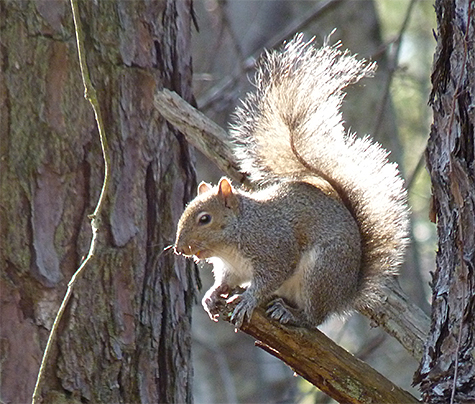
The squirrel in the picture was busily running up and down the trunk of the pine tree that it was perched on, collecting material to add to its nest. The nest was placed on a horizontal branch of a pine directly over the boardwalk in front of the Black Bear Overlook.
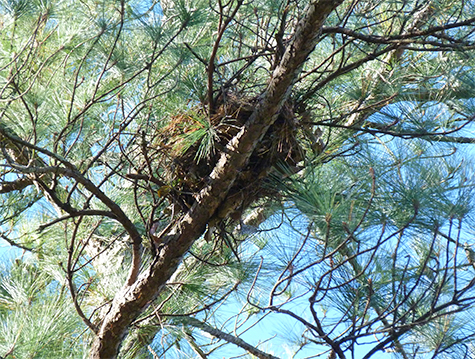
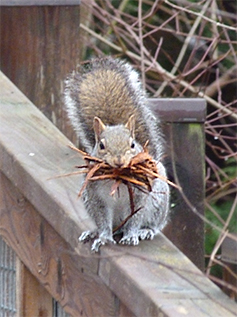
Most squirrels build their nests in a crotch or fork of a tree adding support to the mass of leaves and twigs that make up the nests. The nests, at least outwardly, are often tattered looking affairs that appear to be hurriedly thrown together. The nest above is one of the better examples of outdoor squirrel architecture.
You can see many examples of our resident squirrels’ handiwork throughout the campus here at the Museum. As you walk along through the Dinosaur Trail, Catch the Wind, and Explore the Wild, give a glance skyward, up into the trees, and see if you can spot some of them.
I’ve taken several photos for you, but there are other nests out there for you to find. The squirrels have been extra busy this past week.
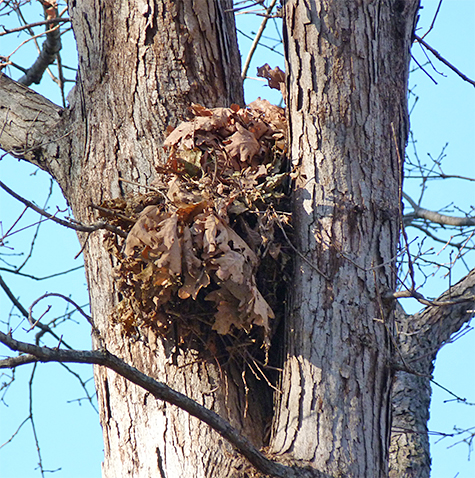
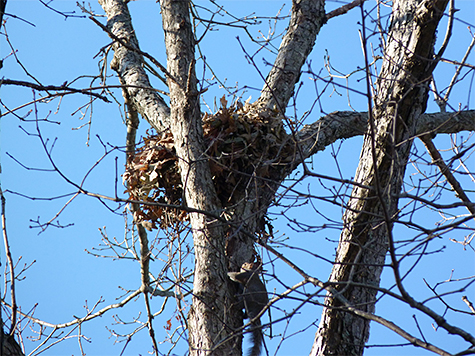
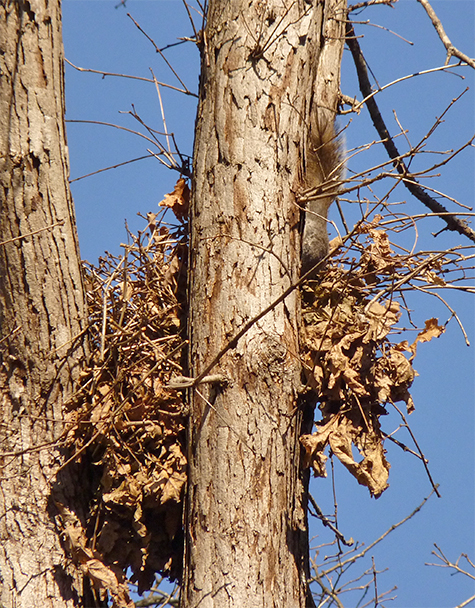
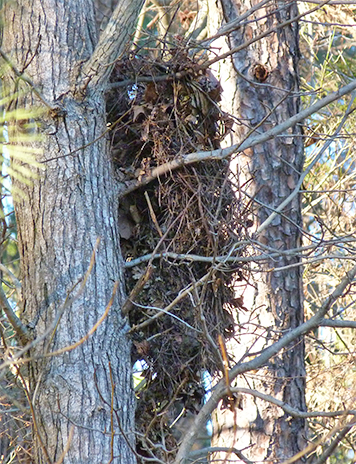
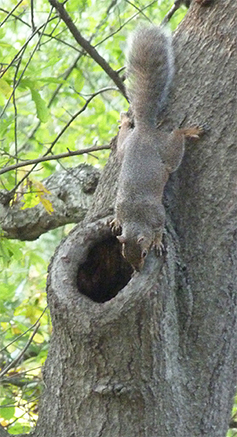
Squirrels will also build nests inside natural tree cavities when available. There were probably many more tree cavities on hand for squirrels to nest in prior to the clearing of eastern forests for farming and urbanization. Gray squirrels were not often found within city limits back in the nineteenth century and beyond.
In the woodland areas however, there are tales of gray squirrels massing in the thousands, the millions, moving over the countryside like so many lemmings when their population vs food supply had reached critical numbers, whatever those numbers were.
In this century, and the one before, gray squirrels seem to have adapted to human activity, adapted well. They can be seen in forests, suburbia, and city parks and streets. These days, it’d be difficult to find anyone who has not seen a gray squirrel on a daily basis.